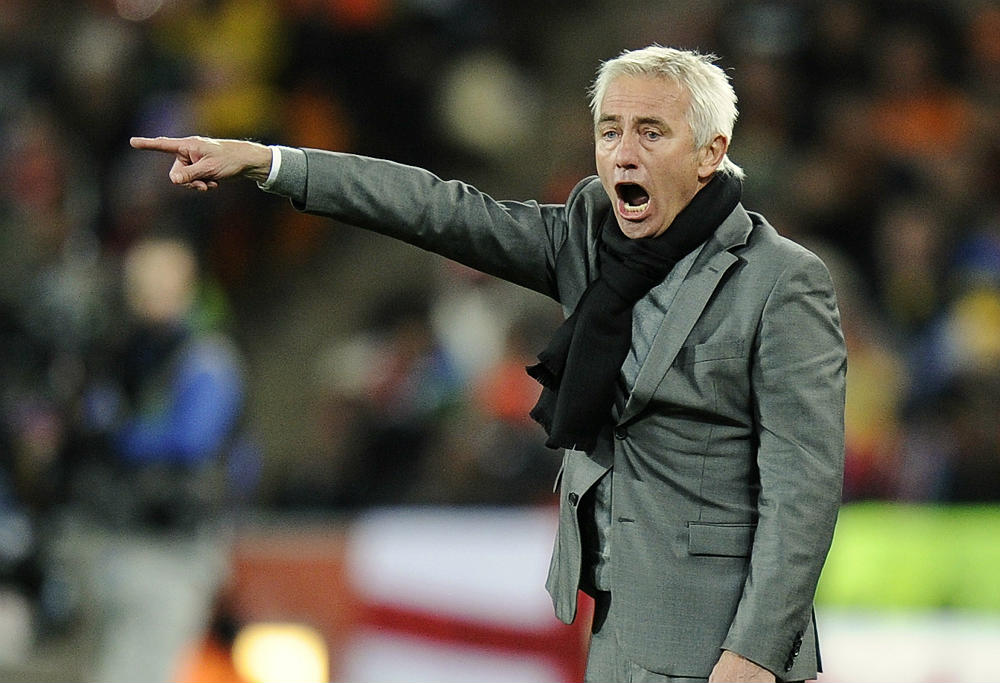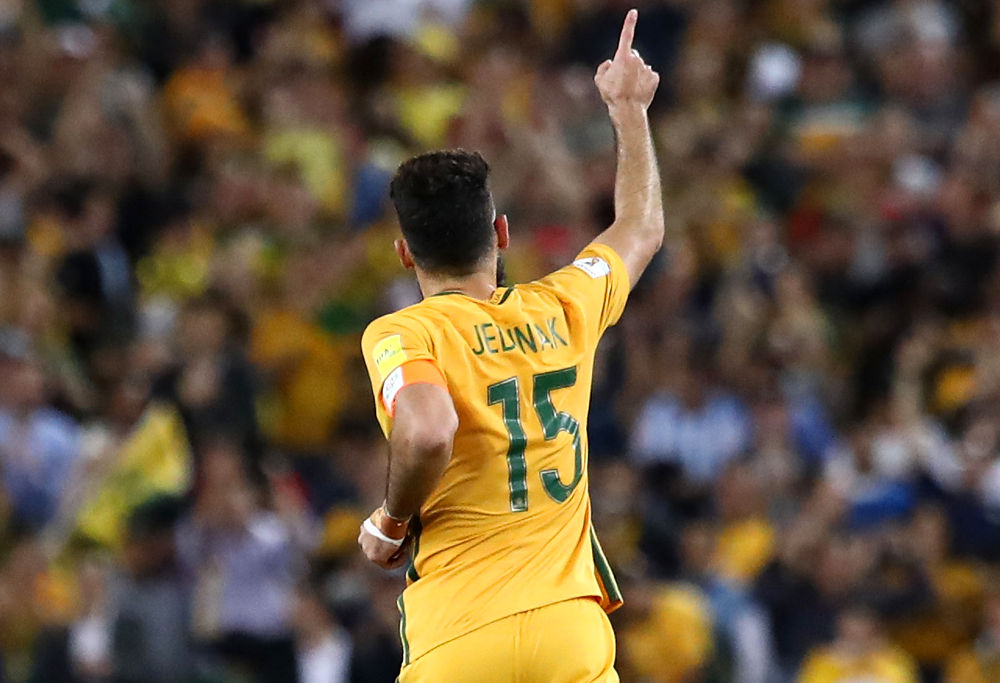Young excellence, promotion battles, and a happy farewell: The Australian team of the week from players around the globe
Even though St.Pauli ultimately lost a high-scoring affair, Jackson Irvine was a standout, as well as scoring a late goal.

Having careered through 2017 like a runaway clown car, veering to smash through every banana stall, bumper bar dangling cockeyed, honking and parping, and launching off an overpass into a fireworks factory, the FFA appear to have begun 2018 by making, well, a good decision.
As it happens, this decision has also crossed off the most important to-do item they had on the agenda, cooling the rising anxiety of those who care about the immediate future of the Socceroos, a fractured feeling that was fluttering up with every passing week of inaction.
Bert van Marwijk, the most suitable candidate in the minds of most, was appointed as national team head coach on Thursday, filling the role left so abruptly by Ange Postecoglou. The Dutchman – best known for taking the Netherlands to the 2010 World Cup final, and most recently in charge of Saudi Arabia – will lead the Roos into Russia 2018, at the very least.
Rumours of his keeping the seat warm for Graham Arnold are of little consequence; van Marwijk is the gaffer now, and it’s to his methods that we’ve lashed our wagon.
[latest_videos_strip category=“football” name=“Football”]
Almost immediately, van Marwijk has stoked the fires of ambition: “We are not going to Russia just to be competitive. I want to win our matches,” he said in the announcement. An admirable display of bullishness this no doubt is, but how will these victories arrive, by what means?
Australia will enter each of their group stage matches, against France (9th in the world), Denmark (12th) and Peru (11th) as the underdogs. Although the Australian fans are expecting competitiveness and wishing for success, a large portion of our collective hopes and dreams are occupied by a gnawing desire not to be embarrassed.
The regularity with which the Roos were conceding goals at the end of Postecoglou’s reign meant the thought of Australia lining up against Kylian Mbappe, Antoine Griezmann and Paul Pogba was enough to caustically erode the pit of the stomach. But we won’t be lining up against France, and their sparkling attack, as Postecoglou’s Roos, will we?

(AP Photo/Martin Meissner)
What examples do we have of van Marwijk teams facing superior opponents in crunch fixtures? Well, most infamously, the 2010 World Cup final saw a slightly cobbled together Dutch side kick the living snot out of peak Del Bosque Spain, in a match the tone of which was set in the opening seconds by Robin van Persie applying a forceful foot to Sergio Busquets’s knee, and was taken to a crashing crescendo by Nigel de Jong’s chest-high karate kick on Xabi Alonso.
It nearly worked for the Dutch, as ugly and limited as it was, but they lost in extra time. A midfield built on the muscular pair of patrolling midfielders, Mark van Bommel and de Jong was designed to protect a partially built defence. A forward line of van Persie, Arjen Robben and Wesley Sneijder was supplemented with the iron-man versatility of Dirk Kuyt.
There was no room in this team for indulgent passengers, and everyone took Kuyt’s astonishing industry as a working example, pressing with fury from the front, swarming and chasing the Spaniard pass-pixies, and, yes, imprinting studs whenever they could.
Arranged nominally as a 4-2-3-1, on the pitch Sneijder and van Persie were largely level with one another, and an almost flat front four line was created, that would swarm fluidly to trap the Spanish as they tried to build up from the back.
In this way, there were clear echoes of Dutch Total Football; the control of space was the primary focus of Ajax under Michel, and the positional interchanging that his Cruyff-led team pioneered allowed for what was, at the time, a revolutionary system of pressing.
“We could play 60 minutes of pressing” Sjaak Swart recalled, himself a member of that Ajax team that dominated Europe, a level of industry almost unmatched on the continent in the late 60s and early 70s, and may have been propped up by some slightly questionable pharmaceuticals.
Van Marwijk’s Dutch team drew from the past, from the intensity of their forebears, and blew it into the 2010 final, and the bravery needed to even attempt that against the technical maestros of Spain must be admired.
But the favourable comparisons largely ended there, kicked away by what Cruyff would call “ugly, vulgar, hard, hermetic, hardly eye-catching, hardly football”, and only derision in defeat remained. Still, aggression, superior fitness and defensive appetite are valuable elements to have in a team, especially when outmatched technically.

(Photo: AP)
What about something more recent? The 1-0 win that took Saudi Arabia to the World Cup last November was certainly a crunch fixture, one played against a superior – albeit already qualified – opponent in Japan.
There, playing at home, van Marwijk wove threads into the Saudis’ approach similar to those that had made up Holland’s brutal tapestry seven years earlier; the midfield and attack operated, in practice, rather differently to what might have been implied by the 4-1-4-1 formation.
In fact, the flat line of four between the holding midfielder and the striker would wash forward and back, sometimes creating a 4-5-1 while defending in their own half, and at other times suddenly overloading the forward line, morphing into a slightly odd-looking 4-2-4, to press the Japanese back line wildly, defending from the front.
The 4-2-4 arrangement was utilised in attack too and, by and large, the midfield was bypassed. Once the ball was won back off a Japanese attacker, three Saudi midfielders would spring forward and join the striker, onto the shoulders of the Japanese defensive line, waiting for a lofted pass from their defence or deep midfield.
If, occasionally, the ball was played out from the back, progress was invariably made rapidly down the wings. It was a system that didn’t necessarily give up the ball willingly – the Saudis actually had more of the ball in that game – but it was one that rarely dallied while in possession; passing for its own sake was rarely indulged in, and directness and verticality were the hallmarks.
Australian readers need no reminding, the Saudis won that game against Japan and relegated the Roos to the gruelling playoffs.
Both teams facing knock-out situations, against superior opponents, using comparatively meagre means. Two systems, made possible by the players buying in to the methods described, both of them leaning heavily on a sense of team-wide defending, fluid responsibilities, and hard graft.
There is a rich vein of pragmatism running through all of this too; even on the biggest stage in football, van Marwijk was prepared to send his team out to turn the fight ugly, in order to win.
It seems likely a return to a back four is imminent, and the days of tremulous wing-backs are over. It seems likely that – if indeed van Marwijk is only here for the big tourney and no longer – an even more pragmatic-than-usual stance will be adopted.
One wonders if the patient – sometimes ponderous – ball-coveting of Aaron Mooy will sit comfortably under the new regime, especially when the tigerish snap of Mass Luongo is there as an alternative. If it wasn’t already ensured by his heroic performance in the second leg against Honduras, then this appointment all but ensures a place in the midfield for Mile Jedinak, the combative, stoic Aussie Mark Van Bommel, if you’ll allow.

(Photo by Cameron J Spencer/Getty Images)
Tomi Juric scored twice against Saudi Arabia last June; will that good impression – plus a great number of other factors – mean the end for Tim Cahill’s (still club-less) international career? Perhaps. That will, if everything else, signify a new era has begun, indeed.
For better or worse, it seems a stark break has been made from the dogmatic idealism of Postecoglou, and that we are set to embrace a different kind of football, conceived by a different kind of manager. It all feels different already.